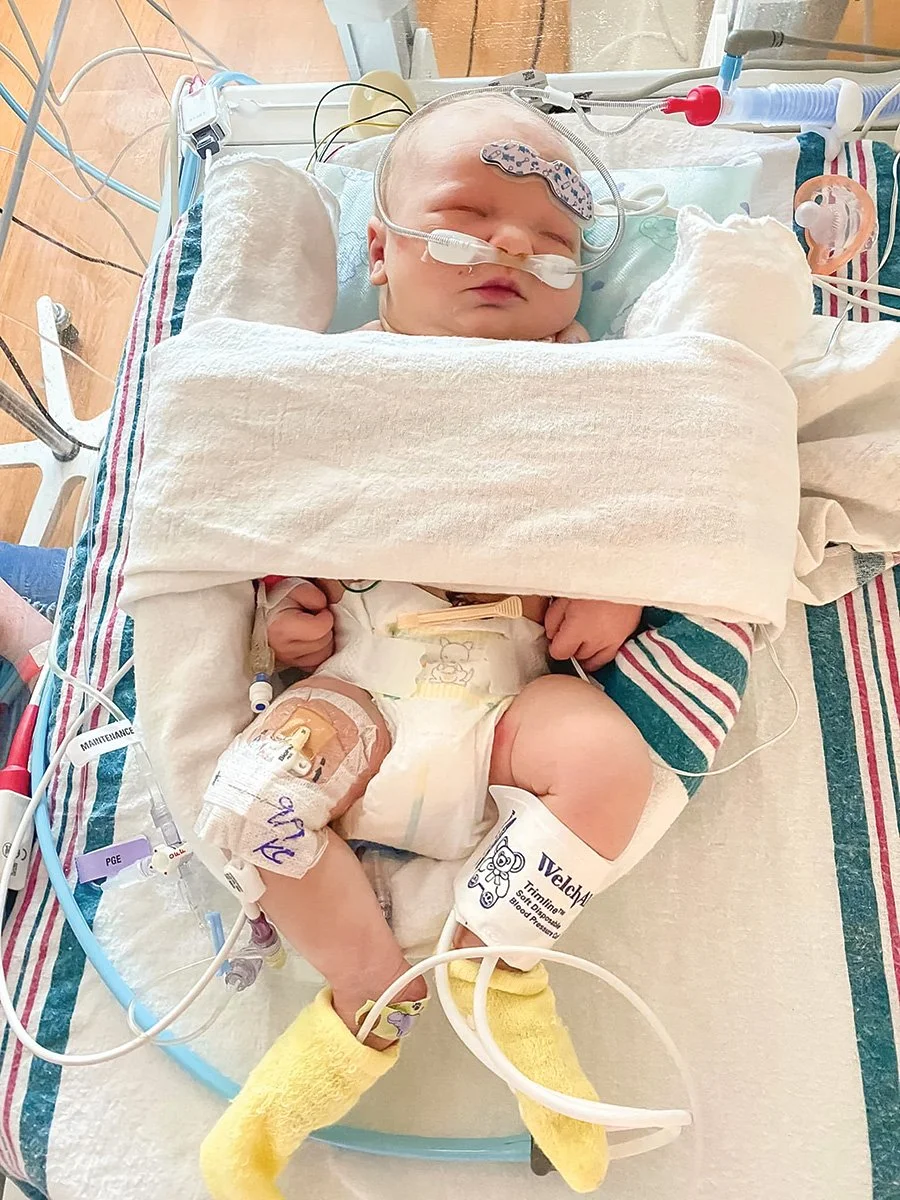Strength in Every Beat
/After four open-heart surgeries, 3-year-old Khloe Anson is thriving
By Phoebe Warren
photo by shane darby.
On September 7th, 2022, a baby girl named Khloe was born to Skylar and Jordon Anson of Nash, Texas. Mother Skylar noted that her pregnancy itself was rather uneventful and even what she deemed “easy.” However, as soon as Khloe was delivered, “easy” was entirely out of the equation.
Only moments old, Khloe was observed trying to hold her breath and was slightly blue from her bellybutton downward. When her parents were finally led to the postpartum wing, everything quickly took a turn for the worse. “Every single time Khloe would try to feed, she would grunt, scream, and vomit this red fluid,” Skylar said. “Her daddy and I knew immediately that something wasn’t right.” Eventually, Khloe was taken to the NICU.
Soon after, a neonatologist came to Skylar to deliver some harrowing news: Khloe had a coarctation of the aorta, a congenital heart defect where the aorta, the main artery that carries blood from the heart to the body, becomes narrowed. “He told me that he had called for a helicopter, it was on its way, and that she would need open heart surgery in Little Rock,” Skylar said. Only 22 hours old, Khloe was loaded up in an incubator and flown to Arkansas Children’s Hospital.
Peri (grandmother), Jordon, Skylar, Khloe, and Kamree. photo by shane darby.
After arrival, Skylar was informed that Khloe had not just one but several heart defects: coarctation of the aorta, moderate perimembranous ventricular septal defect (VSD) (a hole in the heart’s septum), mitral arcade with moderate mitral stenosis (a narrowed mitral valve), and left ventricular outflow tract obstruction (which prevents blood from reaching the aorta). All of these defects can be summarized into one condition called Shone’s complex or Shone’s syndrome. Shone’s syndrome is a rare condition, even among congenital heart defects; of all the cases of congenital heart diseases, it accounts for only 0.6%.
Khloe had her first open-heart surgery when she was six days old, to repair her coarctation. She was able to come home three weeks afterward. Two months later, she was hospitalized again. This time, she was in complete heart failure.
As a newborn, Khloe spent three weeks in the CVICU at Arkansas Children’s Hospital. submitted photo.
“We had some very scary conversations with doctors during that time,” Skylar said. Khloe was put on diuretics and oxygen for support, and she had a feeding tube placed in her stomach prior to being discharged.
In April 2023, not yet 9 months old, Khloe had her first heart catheterization to evaluate her heart in-depth. She was once again admitted to the hospital and scheduled for a mitral valve replacement. However, the surgeon was unsure if the mechanical mitral valve would fit inside her tiny heart. The backup plan would be a heart transplant. “That was the hardest week of my entire life,” Skylar said. “The lowest I have ever felt. Nobody knew how surgery was going to turn out, not even the surgeon himself.” As it turned out, Khloe’s heart was barely big enough for her 15-millimeter St. Jude Mechanical Mitral Valve, the smallest mechanical valve on the market.
Khloe remained in a precarious situation. The surgery resulted in complications that included a serious case of hemolysis and a new hole in her heart that needed fixing. These issues added to the challenges she faced for the next six months, during which Khloe received over 45 blood transfusions. At 19 months, however, she underwent surgery in Boston, Massachusetts, to repair her perivalvular leak, finally resolving the needs for frequent blood transfusions.
“That whole next year was the best year yet,” Skylar said. “Khloe got to live a normal life. Sickness was kept at bay, her [blood thickness] was stable finally, and we lived all summer at our local waterpark.”
Eventually, Khloe outgrew her valve and was scheduled for a third open-heart surgery on July 24th, 2025. This time, a 19-millimeter fit perfectly. One week post-op, the decision was made by the medical team to reopen Khloe and place a permanent pacemaker—her fourth open-heart surgery.
The pacemaker was a turning point for Khloe and her family, who have all struggled alongside her in the tumultuous journey toward normalcy. “Her pacemaker is really cool,” Skylar said. “I don’t have to worry about a thing. There’s an app I have on my phone, and as long as she’s connected to my phone’s bluetooth, the clinic in Little Rock can see Khloe’s heart every single second of the day.”
Khloe bonded with her “heart buddies,” Freya, Lauren, and Isla, at Arkansas Children’s Hospital CVICU. submitted photo.
Khloe has her pacemaker checked whenever she goes in for checkups. As of her last visit, she has 9 years of battery life left. Her atrium is being paced 9% of the time, while her ventricles are being paced 100% of the time, making her fully pacemaker-dependent. When she needs new batteries, a small incision on her abdomen will be made to change out the batteries—a simple outpatient procedure. Khloe will also be on a blood thinner medication of some sort for the rest of her life, and there will always be more cardiology visits to ensure her continual health.
At just 3 years old, Khloe Anson is a powerful testament of triumph. While Khloe will require a few more mitral valve replacements and more cardiac catheterizations, Skylar does her best to treat Khloe like a normal 3-year-old child, and the rest of the family follows suit. “Nothing holds her back,” Skylar said. “Now with the pacemaker, she can’t do contact sports, but [other than that] who is going to tell her no?”




